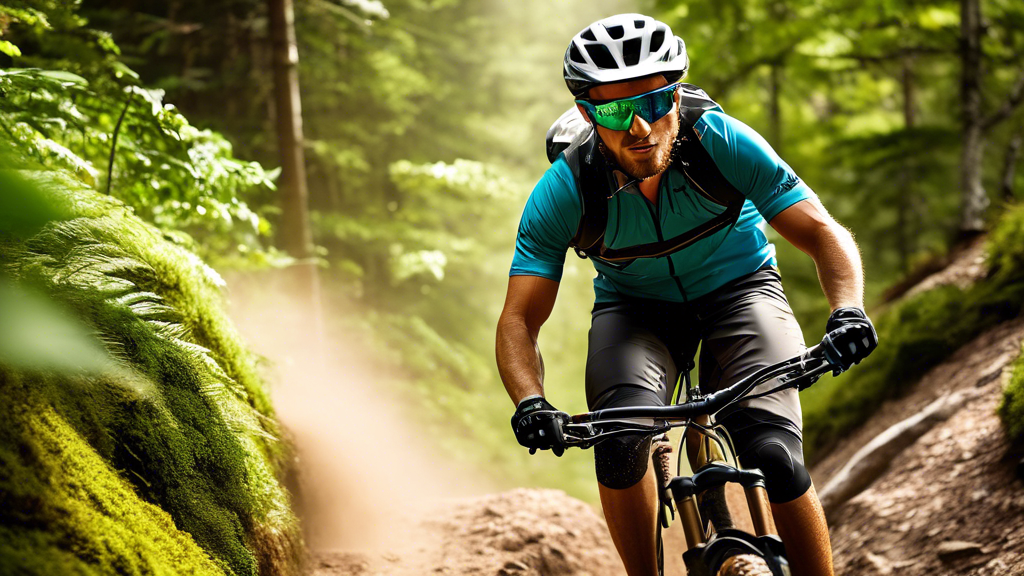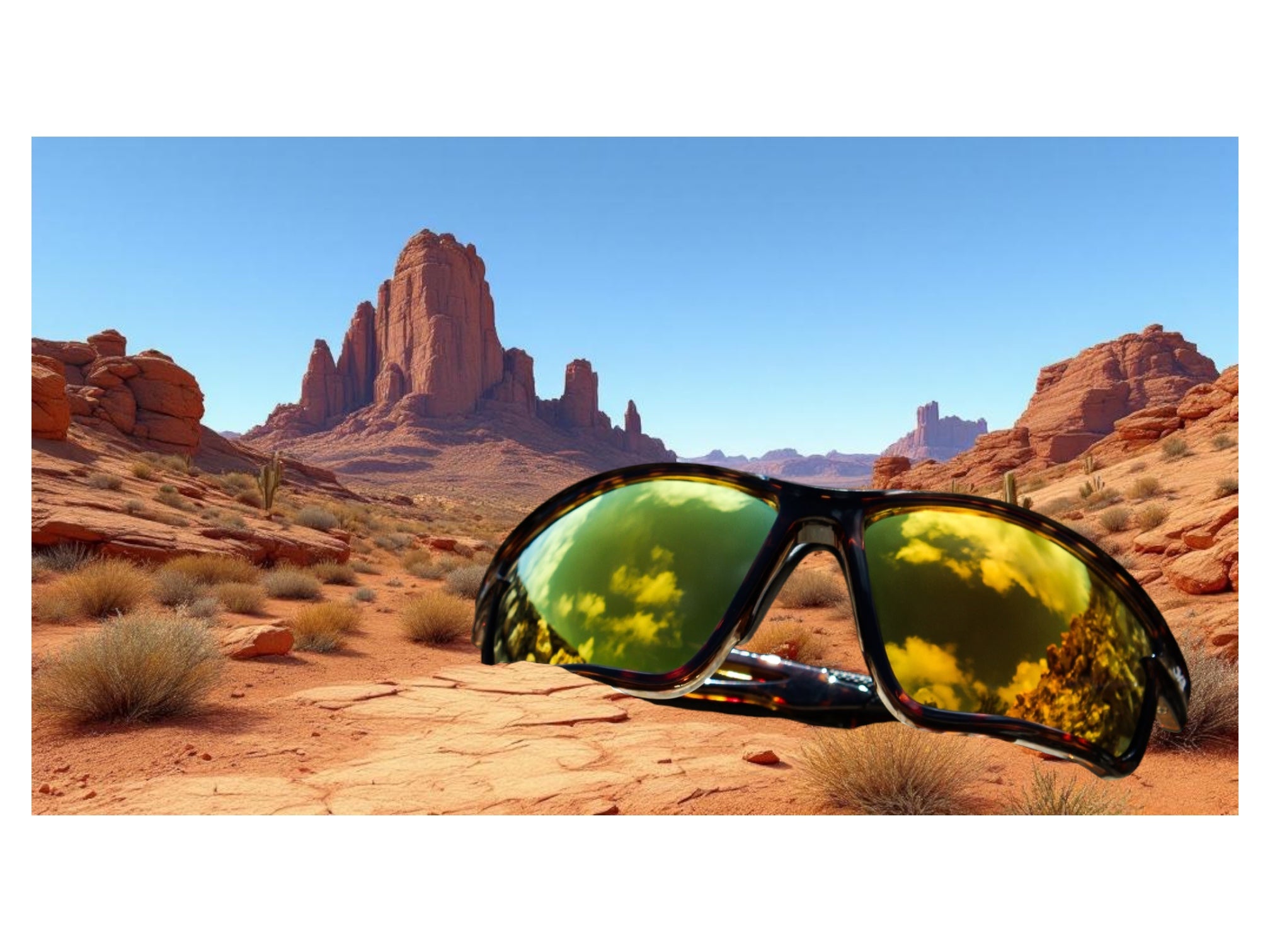Introduction: Why MTB Sunglasses are Essential for Trail Riders
|
Mountain biking demands focus, resilience, and an acute awareness of one's surroundings. As trail riders tackle diverse terrains, ranging from rocky descents to dust-filled trails, the importance of reliable eyewear becomes evident. MTB sunglasses are not a mere accessory but a functional piece of gear that enhances performance, safety, and overall riding experience. Their role integrates protection, visual clarity, and adaptive functionality, tailored specifically to the challenges presented by off-road cycling.
The trails often expose riders to unpredictable conditions such as flying debris, low-hanging branches, or sudden changes in light. MTB sunglasses act as a crucial barrier against environmental hazards. Without appropriate eye protection, riders may face discomfort or even injuries caused by dirt or sharp objects. MTB sunglasses offer robust lens materials that resist impact, ensuring riders can focus solely on the trail ahead.
More importantly, MTB sunglasses amplify visibility. Trail conditions frequently vary between shaded forest segments and sunlit open zones. This fluctuation can strain the eyes and impair navigation. Modern MTB sunglasses utilize advanced lens technologies, including polarized or photochromic lenses, to adapt seamlessly to shifting light conditions. Such features reduce glare, enhance contrast, and improve depth perception, allowing riders to identify obstacles efficiently.
MTB sunglasses are also engineered for comfort during extended rides. Features such as anti-fog coatings, adjustable frames, and ventilation systems help prevent lens fogging and ensure a stable fit. Combined with lightweight designs, they minimize distractions, enabling riders to maintain optimal focus even during strenuous rides.
Equipping the right pair of MTB sunglasses is not merely a matter of style but a vital consideration for trail safety and performance. With an array of designs and functionalities available, choosing MTB sunglasses tailored to personal requirements supports a seamless and enjoyable riding experience.
Key Features to Look for in MTB Sunglasses
Mountain biking presents unique challenges, and the right sunglasses can make a substantial difference in performance, safety, and comfort. Riders should consider several key features when selecting MTB-specific sunglasses to ensure they meet the demands of off-road trails effectively.
Lens Technology
- UV Protection: High levels of UV protection are essential to safeguard your eyes from harmful ultraviolet rays during long hours in the sun.
- Photochromic Lenses: These adaptive lenses adjust to changing light conditions, providing optimal visibility when transitioning between shaded forest trails and open, sunlit patches.
- Polarized Lenses: Polarization reduces glare, especially helpful when riding near reflective surfaces like wet rocks, puddles, or snow.
- Impact Resistance: Look for lenses made from durable materials like polycarbonate to protect your eyes from flying debris or accidental falls.
Fit and Comfort
- Wraparound Design: Sunglasses with a wraparound frame offer a snug fit and shield your eyes from wind, dust, and debris.
- Adjustable Nose Pads and Temples: Customizable components ensure the glasses don’t slip during high-intensity rides.
- Lightweight Construction: Lightweight frames minimize discomfort or fatigue during long rides over uneven terrain.
Ventilation and Fog Prevention
- Anti-Fog Coating: Prevents the lenses from fogging up, particularly in humid or sweaty conditions.
- Ventilation Channels: Frames with integrated vents help maintain airflow to keep the lenses clear.
Durability and Build Quality
- Frame Material: Consider rugged yet flexible materials like TR90 to withstand impacts. A flexible frame reduces the likelihood of damage during crashes.
- Replaceable Components: Sunglasses with interchangeable lenses or replaceable parts extend their longevity and versatility.
Specialized Features
- Tints and Colors: Different lens tints provide specific advantages; for example, amber or rose lenses enhance contrast in low light, while gray lenses are ideal for bright daylight.
- Hydrophobic Coating: Repels water and dirt to maintain clear visibility during wet or muddy conditions.
- Helmet Compatibility: Ensure that the sunglasses comfortably integrate with your MTB helmet for a secure fit during rides.
When selecting MTB sunglasses, aligning these features with the unique demands of your riding style and environment can significantly enhance your trail experience.
Lens Technologies: Enhancing Vision and Protecting Eyes
Lens technologies in MTB sunglasses play a crucial role in improving visual clarity while safeguarding the eyes from environmental hazards. Cutting-edge advancements are designed to optimize vision by enhancing color, contrast, and sharpness, which is critical for navigating challenging trails. High-performance lenses do more than just block sunlight; they adapt to changing light conditions, ensuring an uninterrupted view of the terrain.
One key innovation is photochromic lenses, which automatically adjust their tint based on light intensity. These lenses darken under bright sunlight and lighten in low-light conditions, offering versatility during rides that transition from open fields to dense forests. Polarized lenses, on the other hand, are engineered to reduce glare caused by reflections from wet or shiny surfaces, helping cyclists maintain focus without distraction.
Ultra-durable lens materials like polycarbonate and Trivex are essential in MTB sunglasses, providing both impact resistance and optical clarity. These materials help prevent injury from flying debris, branches, or accidental drops, ensuring safety along with visual performance. Another leading technology, anti-scratch coatings, enhances durability by preserving the lens surface against minor abrasions caused by dust and dirt.
UV protection remains a non-negotiable feature in MTB sunglasses. Lenses with 100% UVA and UVB protection shield riders from harmful ultraviolet rays, significantly reducing the risk of long-term eye damage. Some lenses also include blue light filtering to reduce eye strain during extended outdoor activities.
Anti-fog coatings are especially beneficial for mountain biking, a sport where fluctuating temperatures often lead to lens fogging. These coatings maintain visual clarity in humid or cold conditions, ensuring uninterrupted performance. Hydrophobic and oleophobic treatments further boost lens functionality by repelling water, oil, and smudges for clear, low-maintenance optics.
By blending function and innovation, modern lens technologies provide MTB riders with the confidence to tackle unpredictable trails, reinforcing their importance as an indispensable cycling accessory.
Durability and Comfort: The Importance of Materials in MTB Sunglasses
Mountain biking sunglasses are an essential part of riders' gear, as they must withstand tough terrain, harsh weather conditions, and challenging trails. The materials used in these sunglasses play a pivotal role in ensuring durability, comfort, and optimal performance during rides.
Durability and Strength of Frames
The frames of MTB sunglasses often utilize robust materials like polycarbonate or nylon composites. These materials are chosen for their ability to endure impacts from flying debris, falls, or accidental drops. Polycarbonate frames are lightweight yet strong, making them suitable for long rides without adding extra weight. Additionally, they resist chemical wear and environmental damage, ensuring years of reliable use. Some manufacturers incorporate reinforced hinges or rubberized components to enhance durability without compromising flexibility.
Lenses That Resist Damage
MTB sunglasses generally feature lenses crafted from either polycarbonate or Trivex materials. Both options deliver exceptional impact resistance, crucial for mountain biking’s unpredictable environments. Polycarbonate lenses are shatterproof, protecting riders' eyes from sudden collisions with branches or rocks. Lenses treated with anti-scratch coatings extend their lifespan by preventing wear from rough handling or trail debris. Riders may also find hydrophobic or oleophobic coatings useful for repelling water, mud, and oil, further increasing their lenses' durability.
Prioritization of Comfort
Comfort is equally vital, as prolonged wear often accompanies strenuous activity. Many MTB sunglasses are designed with flexible frames that conform to various facial shapes, reducing pressure points and ensuring snug fits. Adjustable nose pads and temple arms made from silicone or rubber offer added customization and ensure a firm grip during high-speed descents or challenging climbs. Lightweight materials further enhance comfort by avoiding unnecessary strain on the rider’s face.
Balancing Durability and Comfort
Innovative MTB sunglasses prioritize a balance between sturdiness and wearability. Riders value gear that performs reliably under extreme conditions while remaining comfortable during both short and extended rides. Advanced material engineering ensures durability while incorporating elements like ventilation channels, reducing fog buildup for clearer vision and greater comfort.
Selecting sunglasses built from high-quality materials ensures that mountain bikers can focus on their trail experience rather than worrying about their gear. The interplay between durability and comfort, driven by the choice of materials, underscores these sunglasses’ essential role in enhancing performance and protection on the trails.
The Role of UV Protection in MTB Sunglasses
Mountain biking exposes riders to a variety of environmental conditions, with one of the most pervasive challenges being prolonged sun exposure. UV protection in MTB sunglasses serves as a critical feature designed to safeguard riders' vision, ensuring maximum visual clarity and long-term eye health.
The ultraviolet (UV) rays emitted by the sun are invisible to the human eye but pose significant risks to ocular well-being. Extended exposure to UV radiation can lead to acute and chronic eye issues, such as photokeratitis, cataracts, or macular degeneration. MTB sunglasses with UV protection act as a barrier, reducing the harmful effects of these rays during rides in bright, open areas or high-altitude trails where UV exposure is elevated.
Modern MTB sunglasses often employ advanced lens technologies to provide reliable UV protection. Riders commonly expect UV 400-rated lenses, which block 99% to 100% of UVA and UVB rays, offering optimal defense against both immediate glare and long-term damage. Some models also incorporate polarized lenses to minimize horizontal glare, providing additional comfort without sacrificing UV shielding.
Key benefits of UV protection include enhanced safety and visual accuracy during rides. These features are particularly important for trail biking, where obstacles like rocks, roots, and uneven terrain demand quick reaction times. UV-protected lenses maintain contrast and clarity without distortion, enabling riders to navigate efficiently in various lighting scenarios.
It is essential for riders to choose MTB sunglasses with consistent UV ratings and durable construction, as substandard options may degrade over time or fail to provide adequate safeguarding. Whether tackling sun-drenched mountain paths or shaded forest trails, UV protection remains indispensable for eye care and performance enhancement in the sport of mountain biking.
Anti-Fog and Ventilation: Maintaining Clarity on Challenging Trails
Mountain biking often pushes riders into dynamic and demanding conditions, where maintaining clear, unobstructed vision is essential. Fogged lenses can compromise safety and performance, especially on technical trails or during sudden weather changes. MTB sunglasses with anti-fog features and optimized ventilation address these challenges effectively, offering riders consistent visual clarity.
Anti-Fog Lens Coatings
Modern MTB sunglasses integrate advanced anti-fog coatings on the lens surface, designed to minimize condensation buildup. These coatings work by creating a hydrophilic layer that disperses moisture uniformly, preventing the formation of fog. Such technology proves vital in humid climates, early-morning rides, or during periods of heavy exertion, where body heat meets cool external air. Unlike traditional eyewear with untreated lenses, MTB-specific models ensure sustained clarity without constant cleaning or interruptions.
Ventilation Systems for Optimal Airflow
Effective ventilation is another critical component of MTB sunglasses. Strategically placed vents in the frame or lens structure optimize airflow, helping to regulate temperature and disperse moisture. Riders benefit when this airflow reduces heat build-up around the eyes, particularly during long climbs or high-intensity efforts. Many designs feature adjustable vent settings, allowing customization based on the ride’s environment and pace. Select models may even incorporate aerodynamic airflow channels for enhanced performance on descents.
Combining Functionality and Comfort
The best anti-fog and ventilated sunglasses balance technology with comfort. Frames made from lightweight yet durable materials minimize unnecessary pressure, even with integrated ventilation channels. Additionally, lenses with hydrophobic and oleophobic treatments complement anti-fog designs by repelling sweat, mud, and debris. Such versatility ensures riders can maintain their focus regardless of trail demands.
By addressing fogging and ventilation, these features elevate safety and enjoyment for mountain biking enthusiasts navigating through complex terrains.
Impact Resistance and Safety Features for Aggressive Riding
Mountain bikers who navigate rugged terrain and push their limits require sunglasses designed to withstand the physical demands of aggressive riding. Impact-resistant lenses serve as the cornerstone of MTB sunglasses, offering protection against sudden encounters with debris, branches, or flying particles. Constructed from durable materials such as polycarbonate or Trivex, these lenses are engineered to absorb impacts while maintaining clarity and structural integrity.
Safety features go beyond the lenses, extending to frames built to endure tough conditions. Strong yet lightweight materials like nylon or Grilamid ensure the frames resist fractures and flexing, maintaining their shape even under stress. Robust hinges contribute to frame longevity, preventing breakage during rough handling or crashes. This structure keeps sunglasses firmly in place without compromising rider comfort.
Designs also emphasize full coverage to minimize exposure to hazards like dirt, dust, and projectiles. Wraparound styles are particularly effective in shielding peripheral vision while maintaining unobstructed views of the trail. Secure fittings, often enhanced with adjustable nose pieces and anti-slip rubber components, ensure the sunglasses remain stable during high-speed descents or technical climbs.
Safety-enhancing options add further value. Sunglasses with shatterproof lenses reduce the risk of injuries caused by lens breakage, while hydrophobic coatings repel water, ensuring consistent visibility in wet conditions. Anti-scratch coatings preserve both lens durability and optical performance, resisting wear from daily use and debris impacts.
Transitioning between light and dark environments during rides is common, making photochromic lenses a crucial feature for adaptive visibility. These lenses adjust rapidly to changing light conditions without compromising impact resistance. By offering advanced safety measures alongside practical features, MTB sunglasses cater to the rigorous demands of aggressive cycling while protecting riders from unforeseen hazards.
Fit and Adjustability: Ensuring Maximum Performance on the Trail
A secure and comfortable fit is essential when choosing mountain bike (MTB) sunglasses, as proper fit can significantly impact performance and safety. Ill-fitting eyewear may cause distractions, discomfort, or even slip during intense rides, leading to compromised vision and potential hazards on the trail. Therefore, paying close attention to the fit and adjustability of MTB sunglasses is crucial for a rider's success and confidence.
Modern MTB sunglasses are designed to accommodate a wide range of facial shapes and head sizes, ensuring that all riders can find an ideal match. Key features like adjustable nose pads and flexible temple arms allow for a customizable fit tailored to an individual rider's anatomy. Such adjustability helps keep the sunglasses stable during abrupt movements, uneven terrains, or high-speed descents, preventing unnecessary adjustments mid-ride.
The weight and frame construction also play a vital role in optimizing comfort. Lightweight materials such as TR90 or nylon are commonly used, ensuring that the sunglasses remain secure without adding pressure to the face. Riders should also look for ergonomically designed frames that distribute weight evenly and prevent hotspots during prolonged use.
Ventilation features further enhance comfort by reducing fogging and facilitating airflow. Frames with strategically placed vents help prevent heat buildup around the eyes, ensuring clear vision even during strenuous efforts or in humid conditions. Additionally, compatibility with helmets is another factor riders must evaluate. Many MTB sunglasses feature slim-profile arms that integrate seamlessly under helmet straps, ensuring an uninterrupted fit without squeezing or pinching.
Ultimately, the combination of a proper fit and versatile adjustability ensures better performance by reducing distractions and offering superior focus. Riders should invest time in testing different models and settings to find equipment that feels natural and stays firmly in place throughout their most challenging adventures.
Comparing the Top Brands and Models in MTB Sunglasses
When evaluating MTB sunglasses, several top-tier brands emerge as market leaders, each offering distinct features catering to diverse preferences and riding conditions. These brands focus on key aspects such as lens technology, durability, comfort, and frame design to enhance the rider’s experience.
Key Brands
- Oakley: Renowned for their innovative lens technology, Oakley features Prizm™ lenses, which optimize contrast and visibility on uneven trails. Oakley models often include interchangeable lenses and durable, lightweight frames designed to handle the rigors of mountain biking.
- Smith Optics: Known for ChromaPop™ lens technology, Smith Optics offers exceptional color clarity and detail. Their MTB glasses frequently incorporate anti-fog coatings and adjustable nose pads for customized comfort and clearer vision during intense rides.
- 100%: Specializing in performance eyewear for demanding conditions, 100% focuses on rugged designs with excellent peripheral coverage. Models like the Speedcraft boast UV protection, a wide field of vision, and impact-resistant frames.
- Rudy Project: With a reputation for aerodynamic designs, Rudy Project emphasizes high adaptability. Features such as photochromic lenses and fully adjustable temples make these glasses suitable for variable weather conditions and terrains.
Feature Comparisons
- Lens Technology: While Oakley’s Prizm™ excels at enhancing trail detail, Smith’s ChromaPop™ provides remarkable precision in color and clarity. Photochromic lenses, particularly from Rudy Project models, offer added versatility by adapting to changing light.
- Fit and Comfort: Adjustable temples and nose pieces in Rudy Project and Smith models cater to a wide range of face shapes. Oakley prioritizes lightweight designs, focusing on prolonged comfort during extended rides.
- Durability: 100% glasses are often favored for their robust construction, ideal for riders tackling rough terrain. Brands like Smith and Oakley complement this with durable but lightweight materials.
- Price Range: While Oakley and Rudy Project models tend to be premium, 100% offers competitive pricing without sacrificing core performance features, making it a strong contender for budget-conscious riders.
Through careful comparison of these brands and their cutting-edge models, riders can select MTB sunglasses tailored to their needs, ensuring unmatched performance on every trail.
Care and Maintenance Tips for Long-Lasting MTB Sunglasses
Proper care and regular maintenance are essential to ensure that MTB sunglasses remain durable, functional, and visually effective during trail rides. Adhering to a few practical tips can extend the lifespan of the eyewear and maintain its optical quality.
Cleaning and Storage Guidelines
- Use a Microfiber Cloth: Avoid using abrasive materials or clothing to clean the lenses, as this can lead to scratches. Microfiber cloths, specifically designed for eyewear, gently remove dirt and smudges.
- Rinse Before Cleaning: If the sunglasses have mud or fine dust particles on the lenses, rinse them under lukewarm running water before wiping to prevent scratches caused by abrasive debris.
- Lens-Friendly Cleaning Solutions: Opt for eyeglass-specific cleaners rather than household detergents, as harsh chemicals can degrade lens coatings such as anti-fog or UV protection layers.
- Protective Case: Always store sunglasses in a hard or soft protective case when not in use. This prevents accidental scratches or damage caused by drops or pressure during transport.
- Avoid Heat Exposure: Keep the sunglasses away from extreme heat, such as direct sunlight in a vehicle or near heated equipment, which can warp the frame or affect lens integrity.
Maintenance Best Practices
- Inspect for Wear: Regularly examine the sunglasses for loose screws, worn-out nose pads, or damage to the frames. Addressing these issues promptly ensures optimal performance.
- Replace Lenses If Necessary: If the lenses become too scratched or the coatings deteriorate, consider replacing them rather than discarding the entire pair.
- Check Fit: Frames should fit snugly without pinching. Periodically adjust the fit to ensure comfort and prevent shifting during rigorous rides.
Trail-Specific Precautions
- Remove After Heavy Impacts: In the event of a fall or collision, inspect the sunglasses for cracks or structural damage. Compromised eyewear may be unsafe for future trails.
- Debris Awareness: After dusty or muddy trails, clean sunglasses immediately to prevent particles from embedding into lens coatings or seams.
- Rainproof Care: If riding in wet conditions, dry the sunglasses thoroughly after use to prevent moisture from causing corrosion or mold on metal hinges.
By implementing these proactive measures, MTB sunglasses can deliver optimal clarity, comfort, and durability even under challenging trail conditions. Ensuring proper care reflects a commitment to safety and performance on every ride.
How MTB Sunglasses Enhance Your Riding Experience
Mountain biking demands peak awareness and visibility to tackle challenging trails effectively. MTB sunglasses are designed to provide riders with enhanced vision and protection, ensuring their performance remains uncompromised. From reducing glare to safeguarding against debris, this essential gear elevates the overall riding experience.
Improved Visibility and Clarity
The lenses in MTB sunglasses, which often feature advanced optical technology, allow riders to see the trail with extraordinary clarity. Features such as polarization or photochromic lenses adjust to varying light conditions, ensuring precise vision whether riding in dense woods or open terrain. This enhanced visibility helps riders to anticipate sudden changes in trail obstacles, such as rocks, dips, or branches.
Protection Against Environmental Elements
MTB sunglasses serve as a crucial barrier against environmental hazards. Riders frequently encounter dust, mud, insects, and flying debris while navigating rugged trails. These sunglasses function as a protective shield for the eyes, minimizing distractions and potential injuries. Additionally, UV filtration provided by many brands protects against harmful sun exposure, reducing strain even during prolonged rides in bright conditions.
Enhanced Comfort During Rides
Modern MTB sunglasses are crafted for optimal comfort. Adjustable nose pads and lightweight frames ensure that the glasses stay securely in place without causing discomfort. Specialized lens coatings prevent fogging, even when riders face intense climbs or humid conditions. This contributes to a smoother ride, allowing uninterrupted focus on navigating the terrain.
Performance Advantages in Diverse Conditions
With lens options specifically tailored to various weather conditions, MTB sunglasses empower riders to perform confidently across varied environments. For bright, sunny days, mirrored lenses reduce glare and improve trail perception. During cloudy weather or dusk rides, clear or lightly tinted lenses enhance visibility in low-light conditions.
Investing in MTB sunglasses ensures riders can fully engage with the trail while maintaining the necessary eye protection and clarity to push their limits confidently.
Conclusion: Investing in the Right MTB Sunglasses for Clearer and Safer Trails
When selecting MTB sunglasses, prioritizing the right features is essential for ensuring both visibility and safety on the trails. Mountain bikers face distinct challenges, such as fluctuating light conditions, debris on the trail, and prolonged exposure to UV rays. The correct pair of sunglasses can significantly enhance their riding experience by addressing these needs.
High-quality lenses are a fundamental consideration when investing in MTB sunglasses. Polarized or photochromic lenses are particularly beneficial for varying light environments, helping riders adapt seamlessly to shaded forests or open sunlit terrain. Meanwhile, UV protection is non-negotiable, serving to safeguard the eyes from harmful radiation during intense rides under direct sunlight.
Frame construction also plays a critical role. Durable yet lightweight materials such as polycarbonate or Grilamid ensure that the sunglasses can withstand impacts and repeated use, while remaining comfortable throughout extended journeys. Adjustable nose pads and rubberized temples further enhance fit, stabilizing the sunglasses even during strenuous or high-speed maneuvers.
Ventilation systems integrated within MTB sunglasses are invaluable for preventing fogging issues, which can obscure vision at crucial moments. By facilitating airflow and reducing moisture build-up, riders maintain clear visibility regardless of weather conditions or exertion levels. Anti-scratch coatings and hydrophobic lens treatments offer added durability, keeping the eyewear in optimal condition and capable of withstanding harsh environments.
Those who prioritize performance often turn toward well-regarded brands specializing in cycling gear. Renowned manufacturers offer models tailored to the specific demands of mountain biking, integrating cutting-edge technology and ergonomic designs. Versatility is another factor to evaluate; interchangeable lenses provide flexibility for adapting to diverse lighting scenarios, giving cyclists maximum control over their visual experience.
By considering these elements, riders can confidently select MTB sunglasses that contribute to safer navigation and improved trail clarity.






